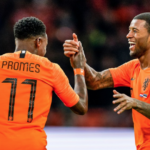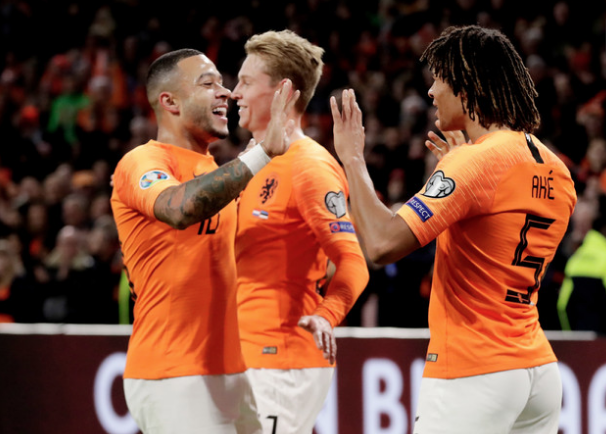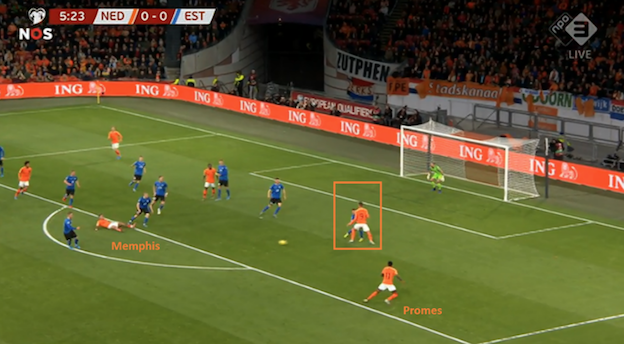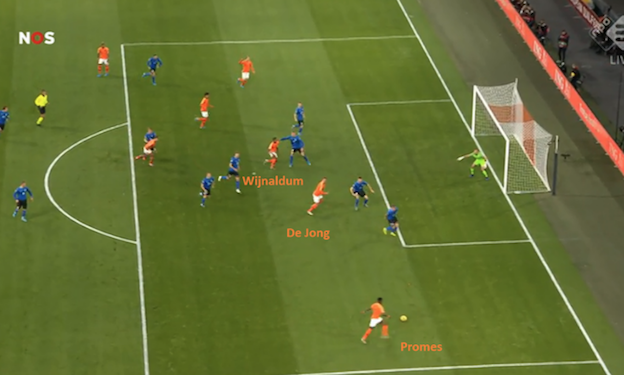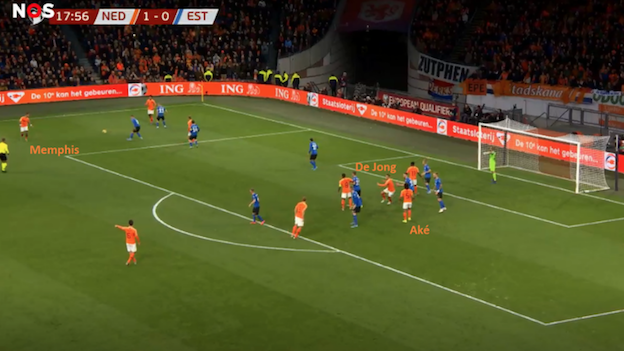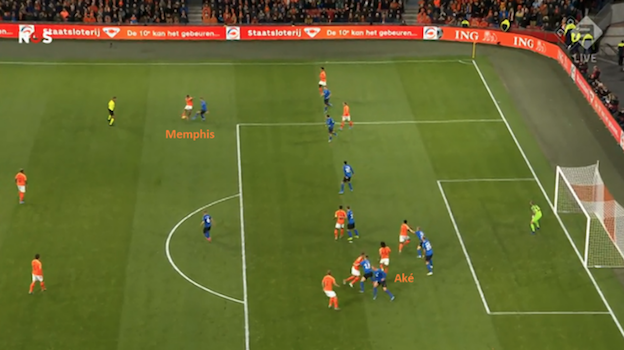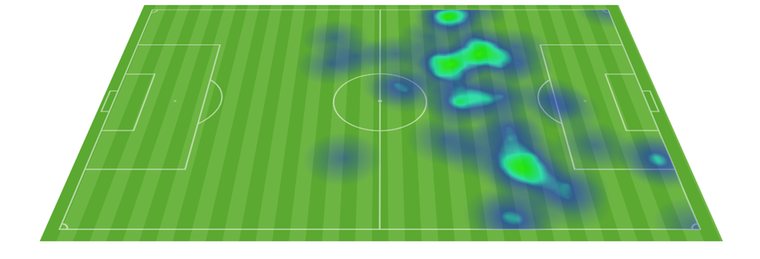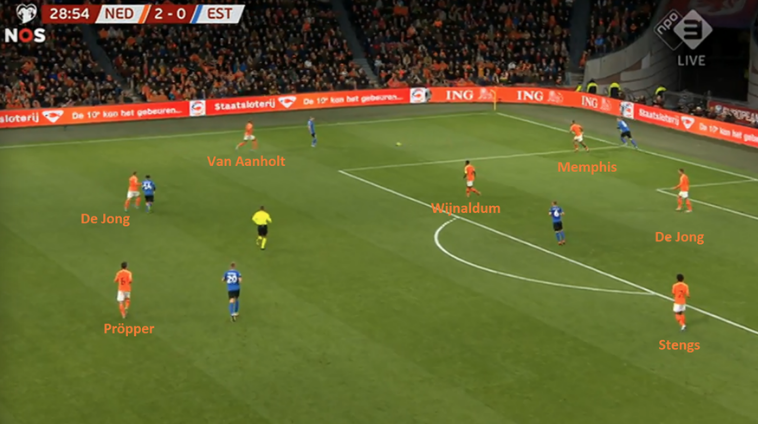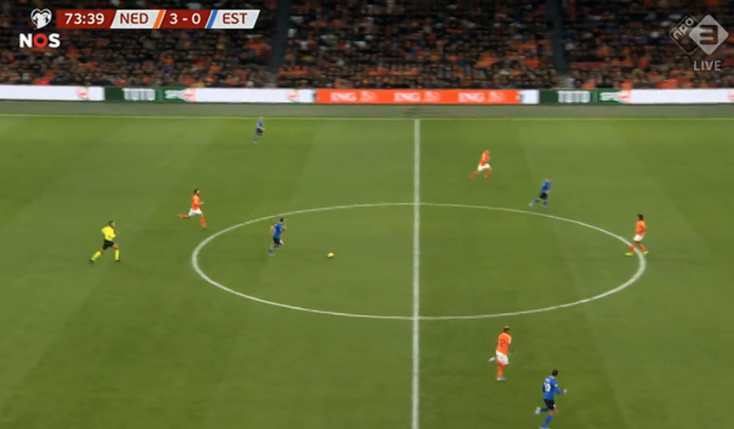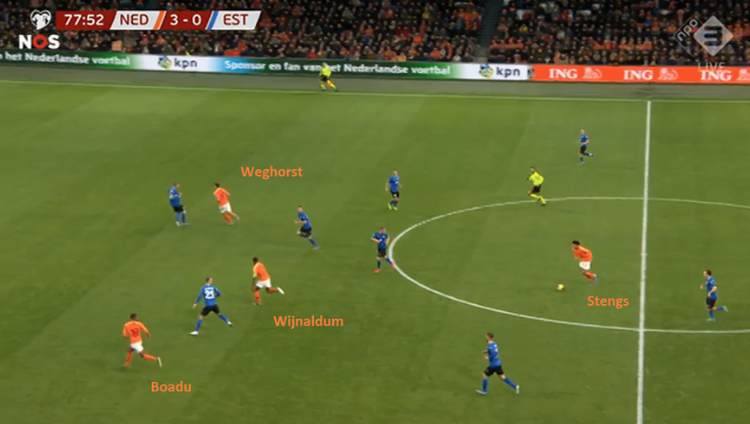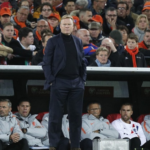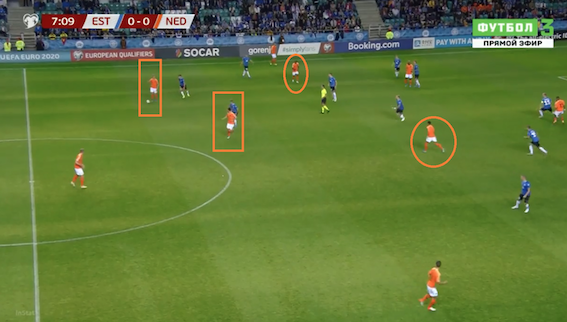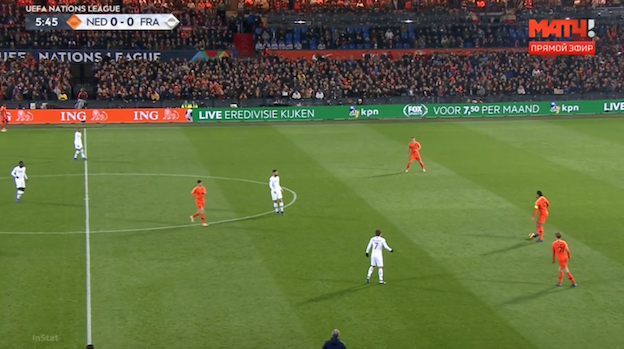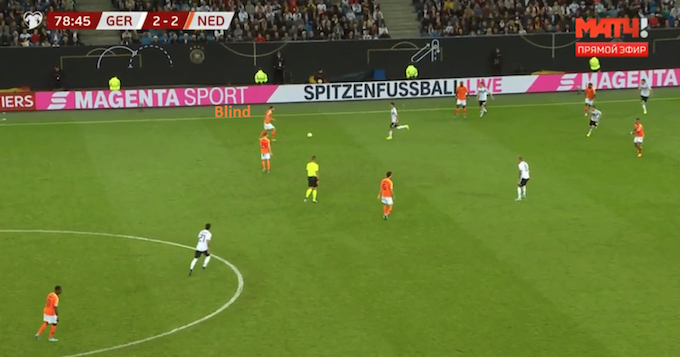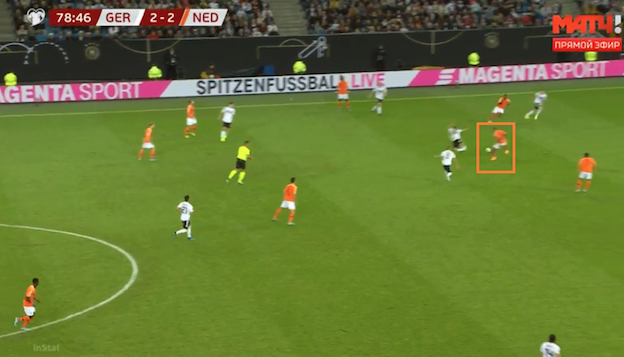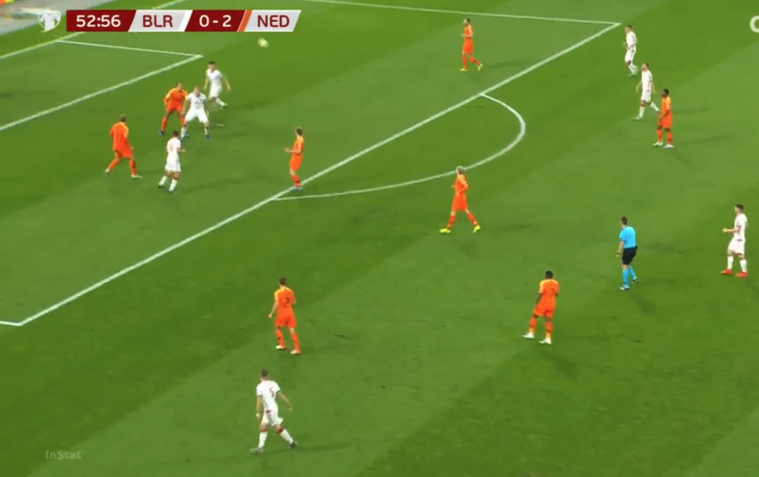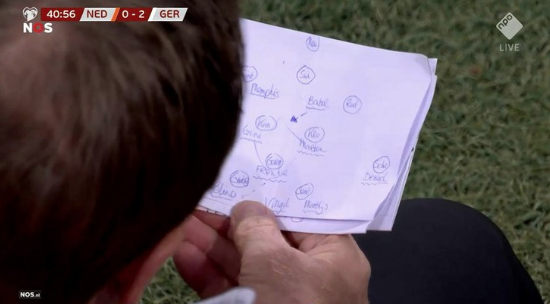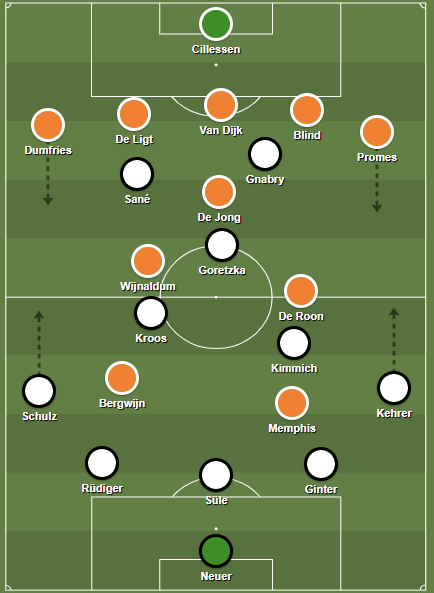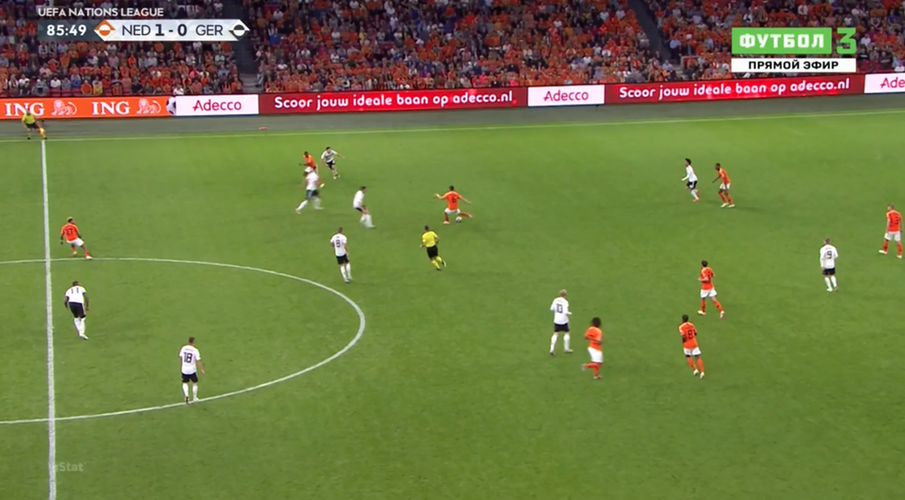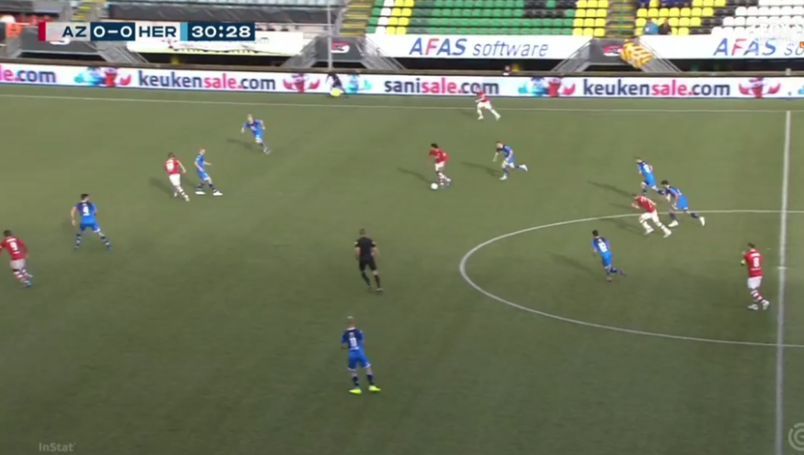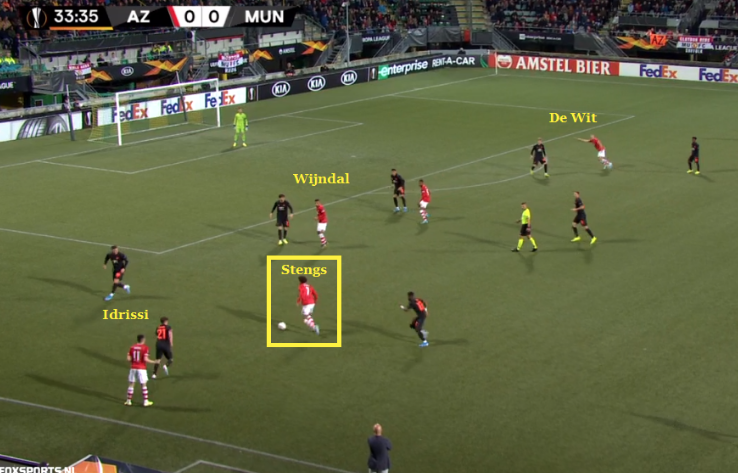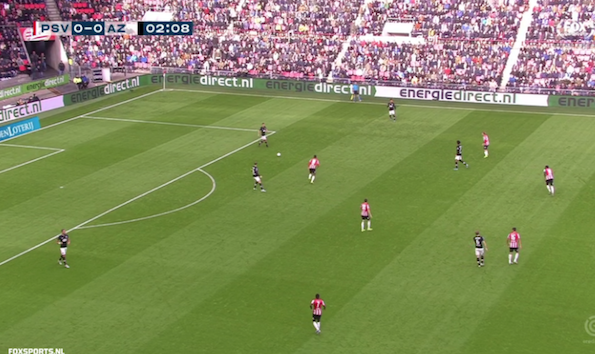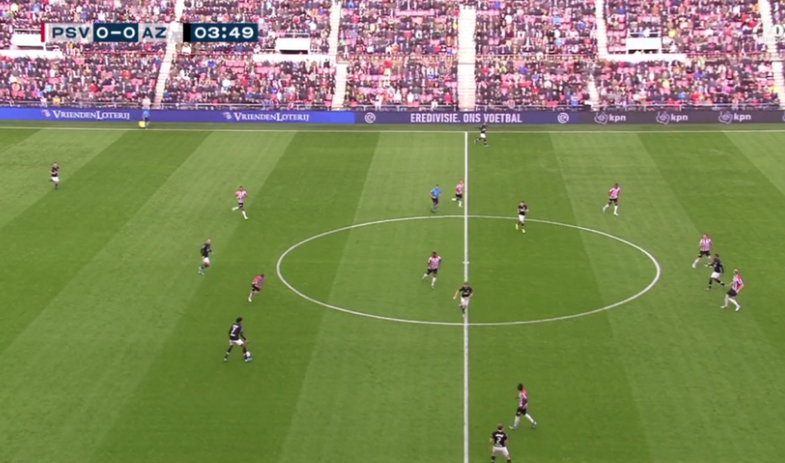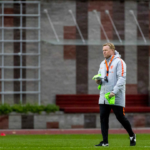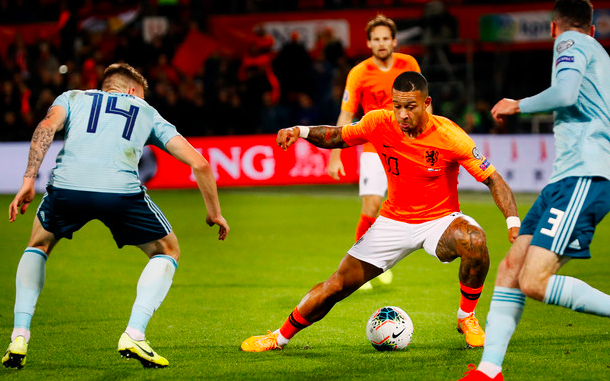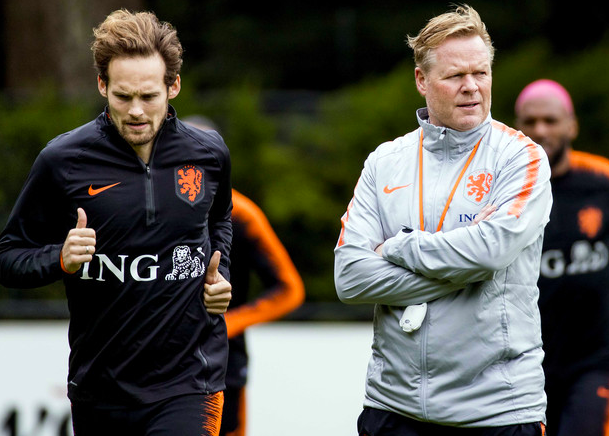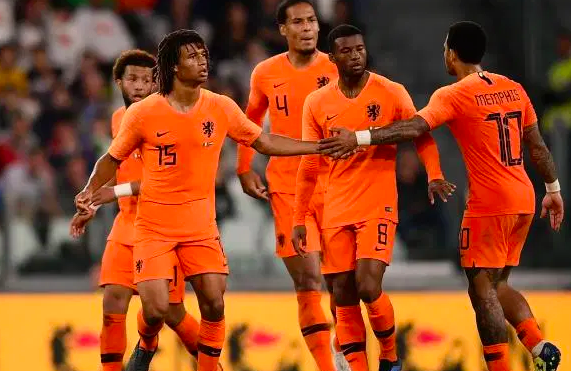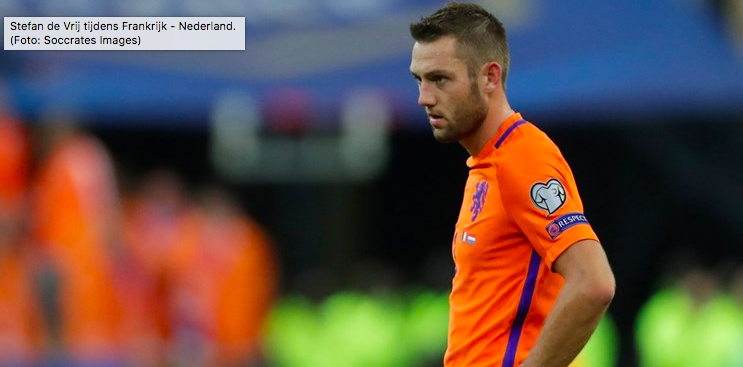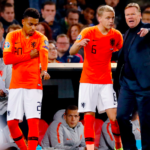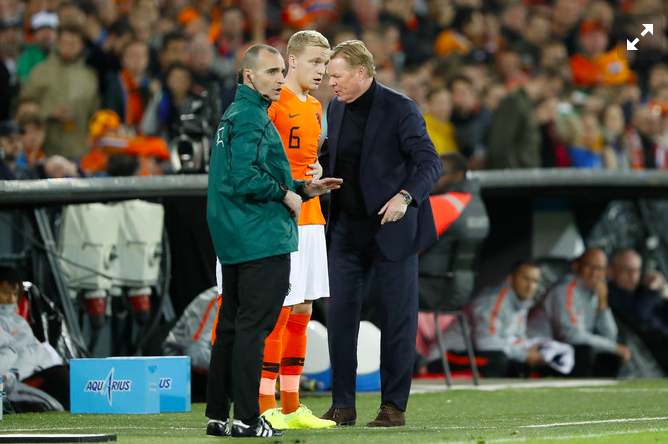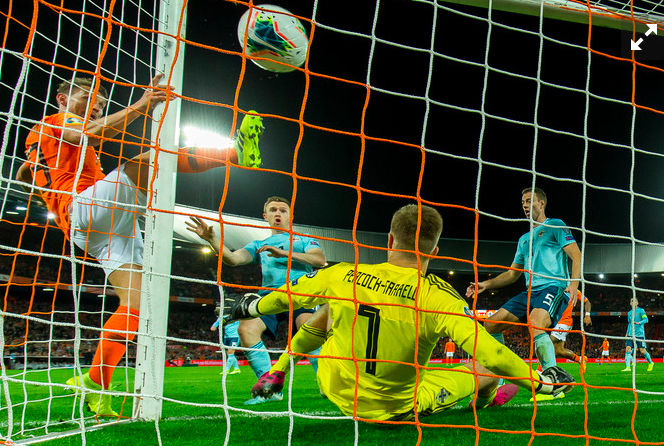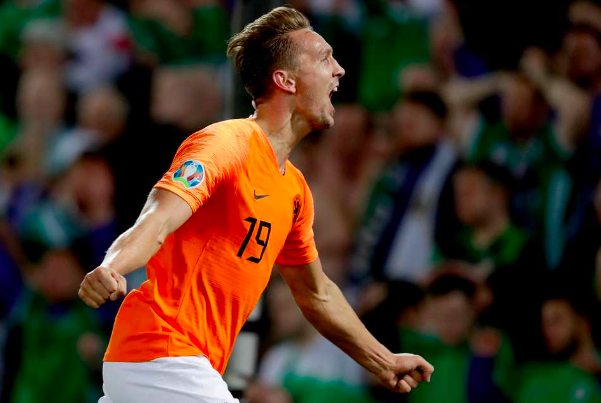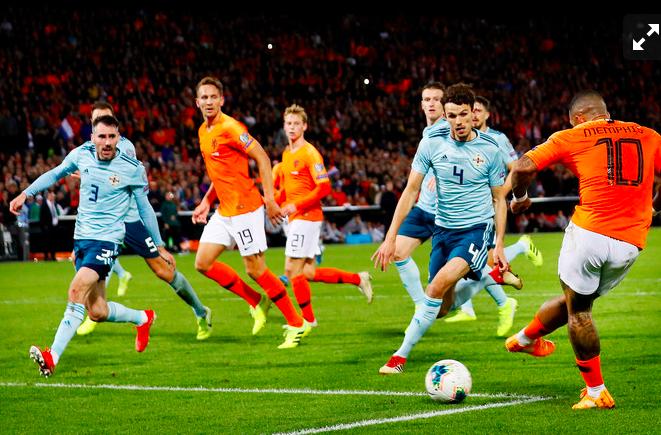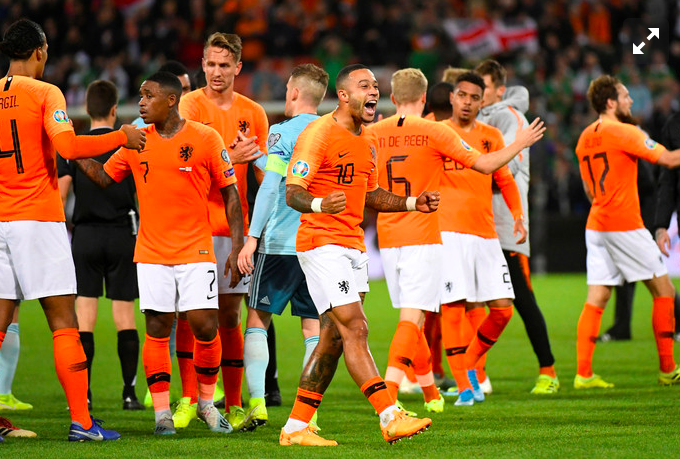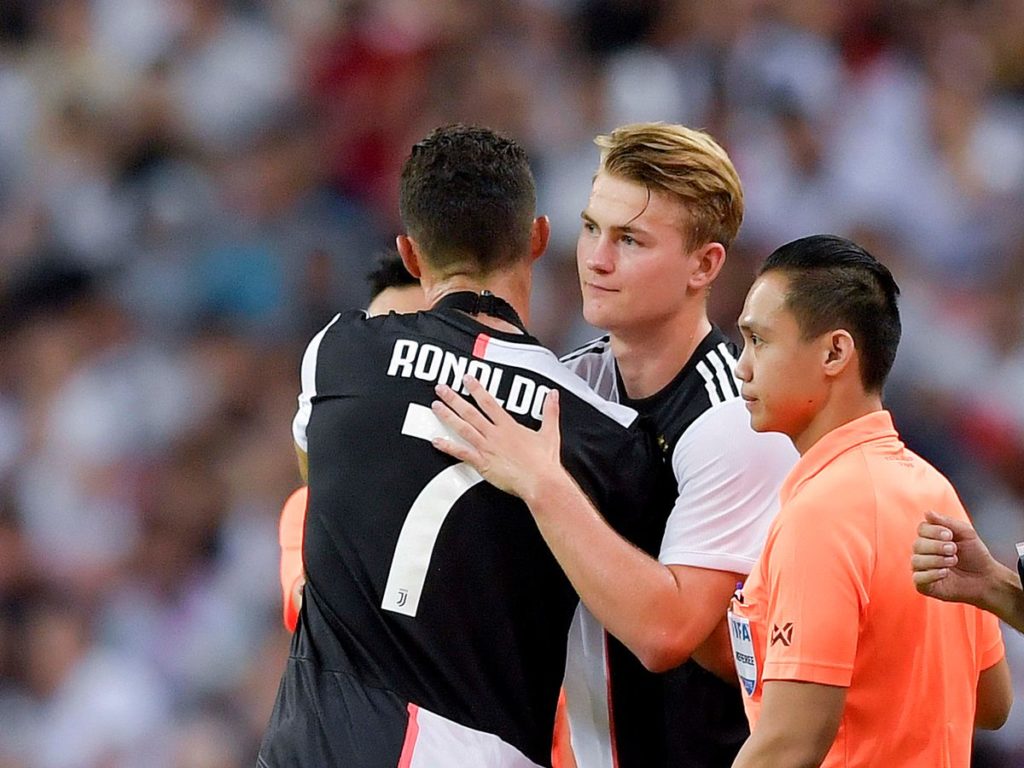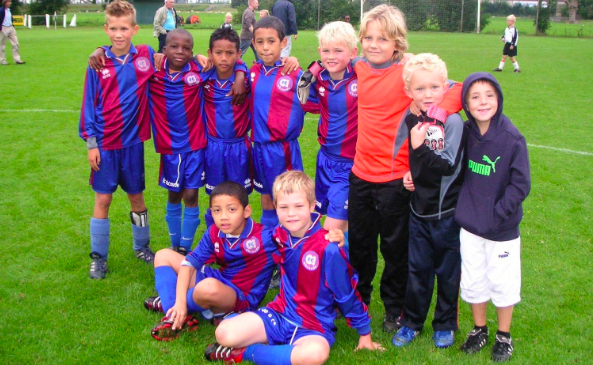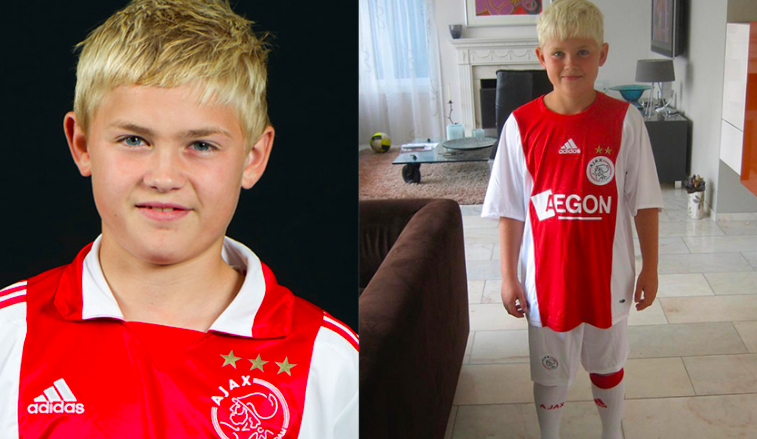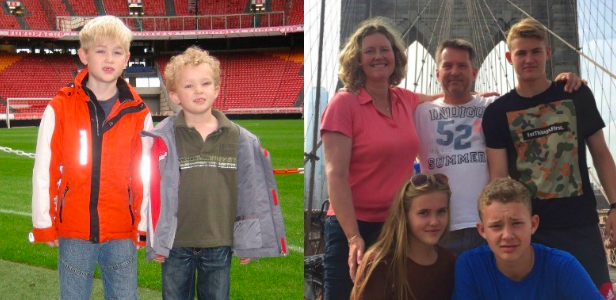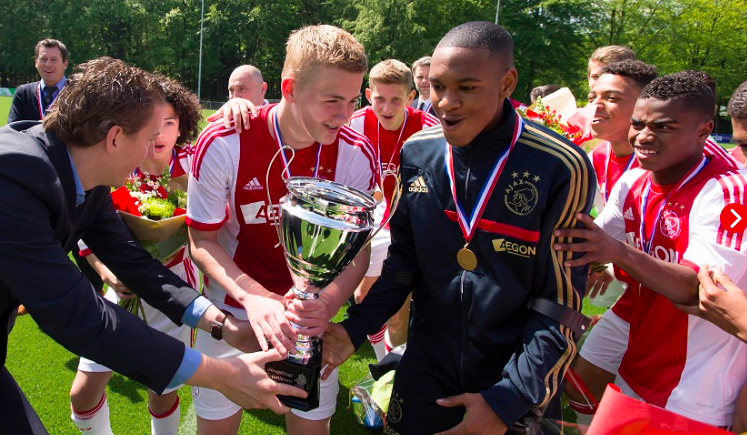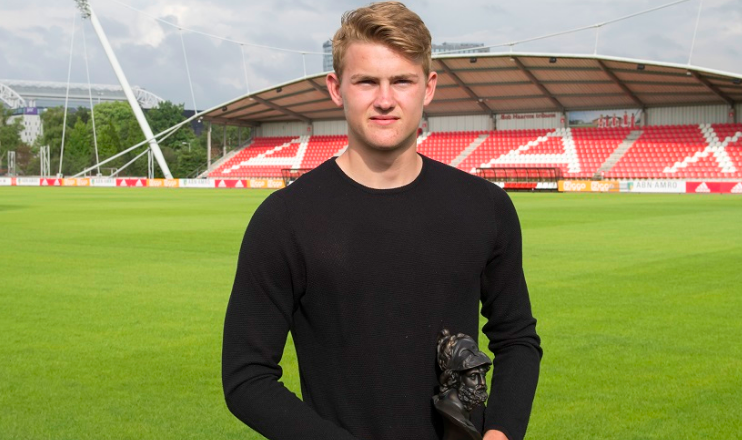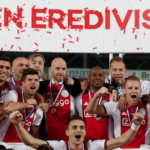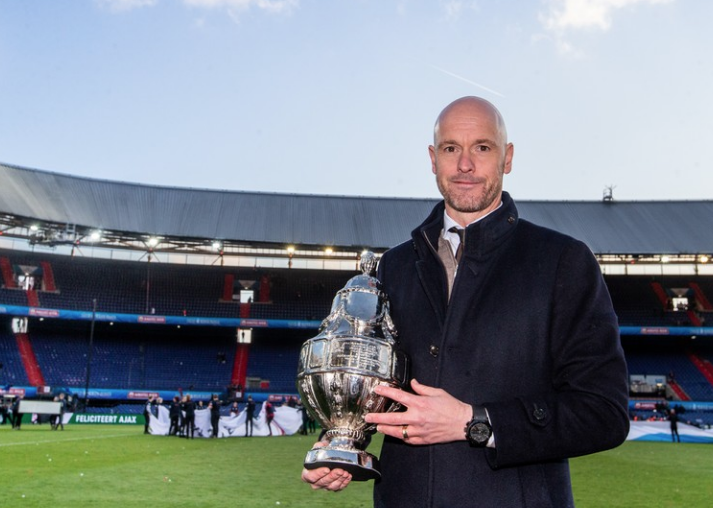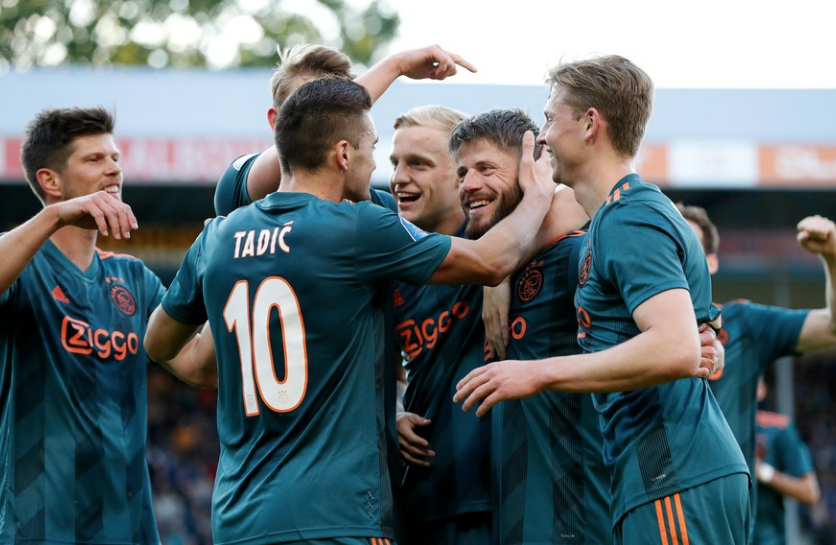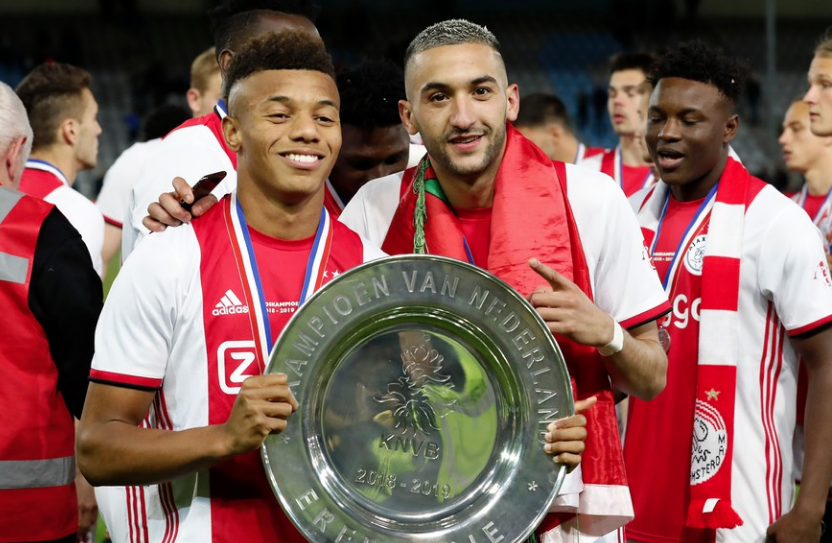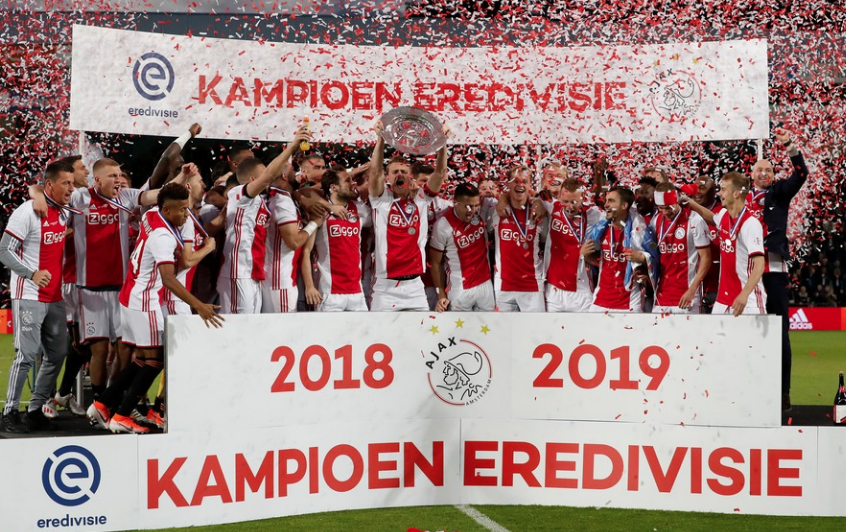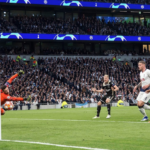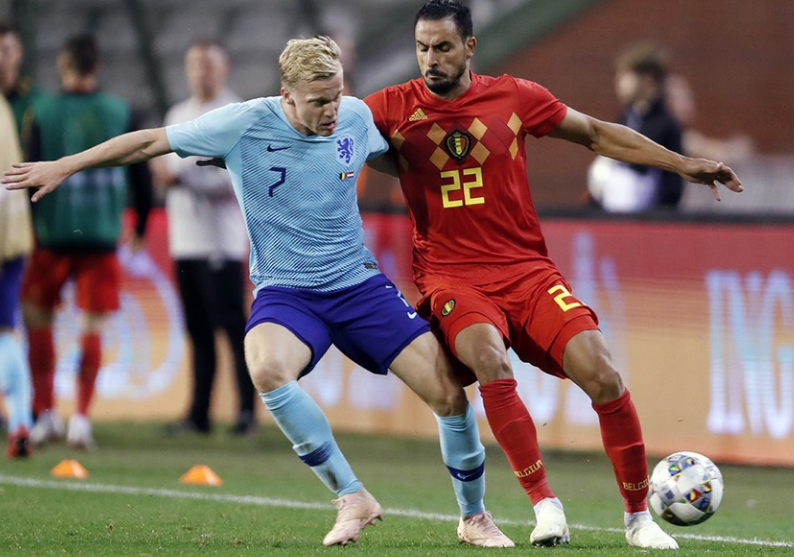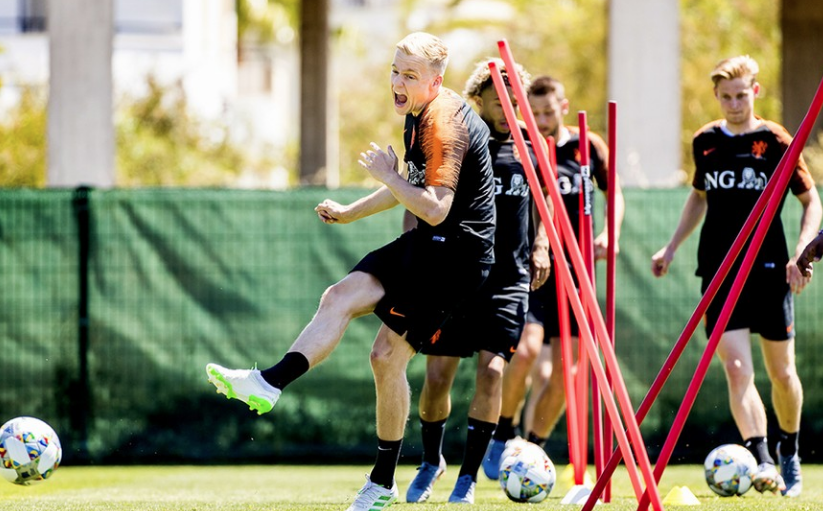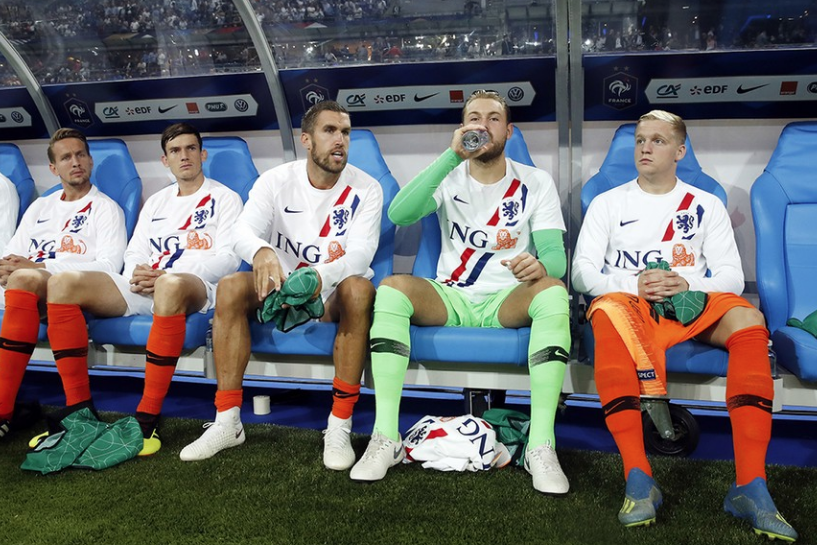Before the Estonia match, Koeman announced he would make some changes and test some ideas… He never is the type to test things while in the race for a prize or trophy, but now, qualified as we were, he was happy to experiment.
At first sight, it didn’t look much like an experiment: 4 defenders, 2 holding mids, a deep striker… But in reality there were indeed some interesting changes…
The most remarkable one was a decision that yours truly already suggested here a number of times: use Quincy Promes as the right wing back instead of Dumfries or Veltman.
Dumfries lacks positional / tactical nous and ball skills but offers speed and power. Veltman lacks speed and power but offers neat passing and experience. But both are just not good enough (for now).
So with most of our opponents playing without an out and out left winger and with our team playing with a left back who lacks the legs to race up and down the flank, why not use the right flank for a player who can – basically – do everything!
He can score, he can dribble, he can run, he can assist, he reads the game well and he’s game: Quincy Promes as right wing back!
And with a right winger who hardly plays on the right wing, a midfielder like Van de Beek and a wing back like Promes can utilise that space.
Stengs was the right winger vs Estonia and he demonstrated to have earned the right to be in the squad. Of course, left footed Berghuis can play in this role too as can Mo Ihattaren and Bergwijn.
Depay came from the left, with marathon man Patrick van Aanholt behind him, and Luuk de Jong as deep striker.
Some elements which Koeman can use…
Luuk de Jong as distractor for Memphis
The comeback at home vs Northern Ireland opened up this option in Koeman’s mind. The Lyon striker couldn’t find an opening against this defensive opponent. Once Memphis went to the left, with Luuk in de team, he found the key to unlock the Northern Irish door.
Against Estonia, Luuk de Jong didn’t impress. He had a supporting role and only one attempt on goal. But as a distractor, he’s really useful.
Luuk de Jong blocks the defender allowing Promes time and space
In the 6th minute, he creates the space for Memphis and then he sets a block so Promes can come in possession and assist Gini’s first goal. Luuk makes his move to the near post and creates space for Gini’s header.
Luuk going near post, binding 2 defenders
Same thing with Oranje’s second goal. Luuk makes a dart to the far post creating space for Ake. Two defenders are with Luuk and Ake has a relatively easy header.
Luuk de Jong takes 2 defenders with him when jumping to the far post
And Ake can enter the space vacated by De Jong & Co
And the fact that in both cases, Memphis creates the goals makes the picture complete. Memphis is rested after the break and Myron Boadu takes his spot. And by then it’s clear that this is a good tactics to use against teams parking the bus.
Memphis’ heat map of the first half. No longer needed as target man upfront, now free to roam
Power on the wings
The position of the backs have been a discussie topic for years. Denzel Dumfries and Joel Veltman miss the composure, technique and vision in the final stage of their rush forward. Something Blind has in spades on the other side, but Daley lacks the pace and the power. The lacklustre performance on the right prompted Koeman to use a different option: Quincy Promes. Estonia was a good opportunity to test his ability. Koeman: “Promes as right back is a solution for the future, in particular against these types of opponents. Because Promes can do everything. He can play winger, he can assist, score, run, but he’s also strong in the duels. And when we need to defend, well…he needs to defend. That’s normal.”
Van Aanholt can do what Promes does on the left. They both show power on the wings and keep on running up and down. This allows Stengs, Memphis and Boadu to find space in the half spaces or midfield. Promes again proves his value by his assist on Wijnaldum (1-0).
Van Aanholt pressing high
It’s also remarkable how Oranje presses with high intensity and high risk. Van Aanholt almost presses the back on to their corner flag. When he does, Ake moves forward as well. This style of pressing resembles what Ajax does. Usually, Oranje plays it less risky. This does show vs Estonia, as a number of times, the forwards press up and the defenders stay in place, allowing Estonia – pretty limited team – to find a way out.
The high press leaving the rest defence wanting at times
The forward pressing backs… The conclusion: with two of them pressing high, the risk is higher but so is our threat. Organisationally, it’s a problem, as the rest defence is vulnerable with both backs gone. This is why Koeman enjoyes playing a more stable deep lying play-making back on the left (Daley Blind) and a marauding right back on the other side (Dumfries, Promes).
Creativity in midield
The most positive aspect of the Estonia tactics, is the way our midfield operates. The recent 0-0 vs Northern Ireland is a good example of the way Oranje played defensive minded opponents. A lot of possession, not enough creativity up front and fully depending on the intelligence of Frenkie de Jong. Whenever the opponent sacrifices a man marker for De Jong, we get ourselves into trouble. In this system, less so. Koeman uses a strong passer of the ball next to De Jong (Davy Propper), which allows for a quicker pass forward than with De Roon. Promes and Van Aanholt are also good build up passers (as is Blind of course). Memphis and Stengs can bring their creativity from the flanks, something Oranje needed badly. Babel – despite his work ethics – couldn’t deliver this too well. Combined with the runs from midfield from Wijnaldum, Memphis and Stengs had ample options for the combination. Wijnaldum’s hattrick has everything to do with this.
The typical Oranje field positions. The full backs are widest. The wingers are in the half spaces. The #10 is close to the striker
With free-style wandering wingers and controlling midfielders who will continuously press up, Holland has a lot of variance and options through the centre. There are constantly different players popping up in certain areas, the Estonia defenders were played drunk. With more time, Koeman will be able to bring in more “automatisms” between the players.
The 4-0 is a good example of Holland’s dynamics. It’s Stengs that pops up in the #10 role and turns the ball around. Sub striker Weghorst makes a run to the left, allowing space for Boadu (left winger) and Wijnaldum (#10) to make a run in behind. Stengs has the skill to find Wijnaldum and the Liverpool midfielder finishes coolly. Two assists in this game for Stengs, a goal for Boadu and a number of positives for Ronald Koeman.

